TMS and ERP systems: How new technologies improve the system integration
An Enterprise Resource Planning system (ERP) helps manage a company’s core business processes in one place. This includes support for production, sales, human resources, and related financials. Companies deploy dedicated cash management solutions to manage their cash and commercial cashflows efficiently. They use a treasury management system (TMS) to manage financial risks or hedging needs using financial market instruments. A TMS often contains a cash management solution as one of its components.
Large ERP vendors, including SAP or Oracle, have developed a set of features for treasury management. However, the ERP system’s primary focus is to give an overall view of company operations and results, while a TMS allows managing financial aspects in detail. Therefore, ERP and TMS systems are separate building blocks of the corporate IT systems architecture. They interface with each other in financial management.
Integration of TMS and ERP system
Looking closer at the interface between the TMS and ERP systems, both directions (ERP to TMS and TMS to ERP) are relevant. Here are some examples:
- The ERP system publishes cashflow forecasts and payables/receivables for further consumption and processing in the TMS.
- The journal entries or the aggregated general ledger account balances from the treasury system are provided for upload to the ERP system.
The source system publishes the data in an open standard format such as XML for the data exchange. The data can be transported from the source system to the destination system, for example, via the company’s middleware. This type of integration between TMS and ERP systems interchanges files through the middleware.
Individual data elements, called tags, in these XML files are proprietary, meaning defined by the source system. They must be transformed or processed before being ready for upload to the destination system. Consequently, many interfaces between TMS and ERP systems require custom-developed transformations and processing.
Technology for better data exchange
Technology trends in the ERP and TMS space are similar. They include the adoption of new technologies for data storage, data processing, and data access. Here are some examples:
- Secure and reliable data storage in the cloud.
- Providing the system and its functionality as a service (SaaS),
- Efficient analysis of large and unstructured data by powerful analytical tools.
- Predictions of future business operations trends with Artificial Intelligence (AI).
- Usage of smart phones to review the results and execute business actions from almost anywhere.
Although technology is improving in many ways, the question of interaction and interfacing between the TMS and ERP systems is not addressed directly. Their “loose integration” is yet to be addressed on a larger scale.
API technology for seamless interaction
Currently, the best option is to use a standardized API (Application Programming Interface) supporting the generic export and import of data. Such APIs are provided by the TMS and ERP systems’ vendors, but the API integration is not happening on a large scale so far.
Aligning the interfaces between the TMS and ERP systems with the existing standard APIs can streamline IT operations. For example, when exporting accounting journal entries to the ERP system, the business contents are generic: amount, currency, debit/credit, GL account ID, and a reference ID to allow backtracking the entries to the originating system. In addition, there could be several custom parameters to which the TMS and ERP systems typically cater.
The source component, the TMS with journal entries in this case, can submit the data to the ERP’s API. If the data structure is OK and the data is valid, the ERP system accepts it through the API and sends an “ACK” back to TMS. In turn, the TMS can conclude the export as a “success”. If, for example, the fiscal period in the ERP system is already closed, an exception occurs, and the ERP system sends back to the TMS a “NACK” with a message about what went wrong. This message can be displayed to the TMS user to act upon it.
Innovation at ION Treasury
ION Treasury offers seven unique treasury and risk management solutions. With our portfolio of TMS, we cover the varying needs of companies of all sizes, industries, and geographies. ION Treasury is at the forefront of innovation. Here are a few examples of our latest developments:
- We offer our TMS solutions in the cloud or as SaaS solutions.
- With add-ons to our TMS like Treasury Anywhere, we give finance professionals access to their TMS through their mobile devices.
- We have implemented machine learning capabilities within our TMS to improve cashflow forecasting.
All of our TMS solutions support the “traditional” file-based integration with ERP systems. Based on the custom developments of hundreds of customers, we compiled a rich solution set for interfacing to ERP systems. ION Treasury also provides API-based interfaces to ERP systems. For example, we offer an online interface to SAP in ION Treasury’s Wallstreet Suite solution.
Using our technology and latest innovations, our customers can align the technical infrastructure of their ERP system and TMS to simplify their IT operations and related maintenance.

ERP vs. TMS: Why treasury needs a dedicated solution
Treasury has become a central hub with specialized expertise to serve the enterprise. Dedicated technology such as a TMS has emerged, serving the treasury’s specific needs. However, with ERP providers offering treasury functionality, more and more people ask, “Why can’t I just use my ERP for treasury?” This ebook introduces three differentiators to help determine what is best for your company.


